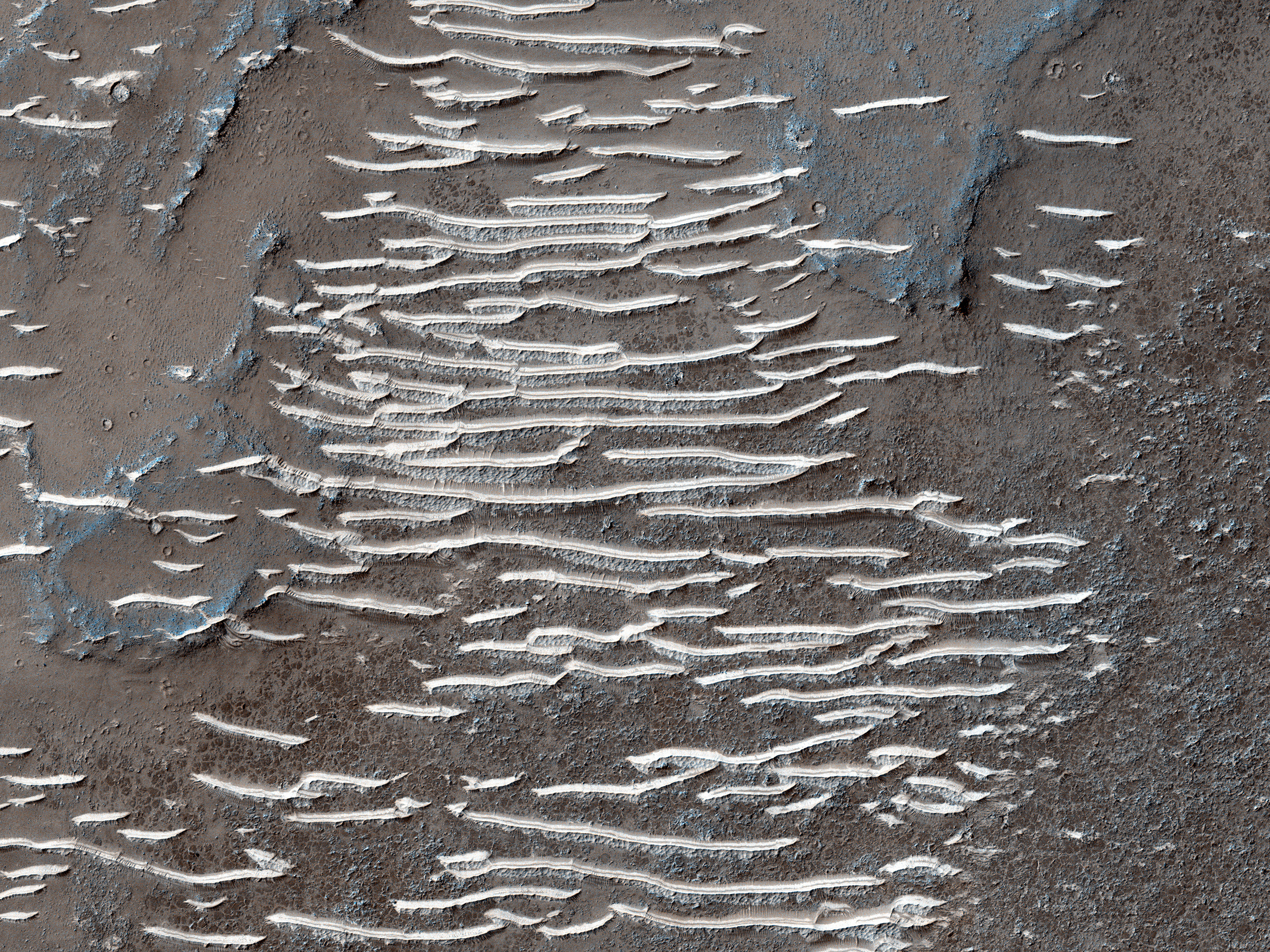The image of ice and dust layers on Mars from an orbiting NASA spacecraft may provide a window into the complex, water-filled history of the Red Planet, a new study suggests.
The puzzling ripples in this image are called transverse aeolian ridges (TAR). They are somewhat in between the size of dust particles and dust dunes, University of Arizona officials said(opens in new tab) in a Sept. 10 statement. The icy steps were spotted in Solis Planum, south of a complex zone known as Noctis Labryinthus and somewhat southeast of Valles Marineris, a huge canyon on Mars.
TAR features like this on the Red Planet are of great interest to scientists because they show how Mars changed over time. The image was obtained using NASA's Mars Reconnaissance Orbiter, courtesy of the university's high-definition camera, known as HiRISE (High Resolution Imaging Science Experiment).
No one is sure how TARs form, exactly. "Ripples form from hopping sand grains, and dunes form from sand grains being blown over longer distances," university officials wrote.
"One hypothesis for TAR formation is that larger grains like pebbles are rolled on top of smaller ripples; then, finer dust settles into the cracks, 'inflating' the pebbles, making the TAR larger than typical ripples," the statement added.
